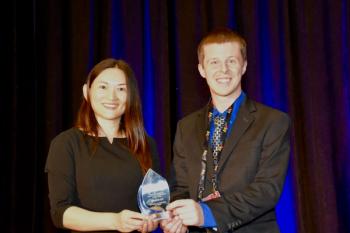
Using a New Raman Method for Real-Time Inline Cell Culture Monitoring
A Raman calibration model was created to study cell cultures.
A novel Raman calibration model for real-time monitoring of cell cultures was developed by researchers from the Yokogawa Electric Corporation in Japan and the School of Biological and Environmental Sciences at Kwansei Gakuin University in Sanda, Japan (1). Real-time analysis of bioprocess parameters is important; it is essential in decreasing production costs and making processes more efficient (1). Currently, offline methods monitor many of the parameters that are analyzed. These parameters include metabolite and product concentrations, cell growth, and other quality attributes (1). According to the research team of Risa Hara, Wataru Kobayashi, and Yukihiro Ozaki, this new method uses a conventional Raman spectroscopy technique to analyze each component in the culture media while calibrating some of the components in real-time (1). The benefit of this new method is that researchers are now able to better control the cell culture environment and improve culture efficiency (1).
Raman spectra were collected and analyzed for the signals of various analytes, including glucose, lactate, glutamine, glutamate, ammonia, antibody, viable cells, media, and feed agent to create the Raman calibration model (1). Specific peak positions and intensities for each factor were then detected, and the samples were prepared by mixing the components according to the experimental method design (1). The Raman spectra of these samples built the calibration models after they were collected. Several combinations of spectral pretreatments and wavenumber regions were compared to optimize the model for cell culture monitoring without the culture data (1).
The developed calibration model was then tested to see how accurate it was. How it was evaluated required performing an actual cell culture and fitting the in-line measured spectra to the developed calibration model (1). The results were encouraging because the calibration model achieved good accuracy for three components under study: glucose; lactate; and antibody (1). The root mean square errors of prediction (RMSEP) for glucose, lactate, and antibody were 0.23, 0.29, and 0.20 g/L, respectively (1). As a result, this new method realized the real-time measurement of metabolite and product concentrations, cell growth, and other product quality attributes without requiring the use of any off-line methods (1).
Real-time monitoring and control of bioprocess parameters are essential to increase efficiency and reduce production costs (1). The new Raman calibration model offers a noninvasive method for analyzing components in culture media and enables the calibration of multiple components in real-time, which allows for better control of the culture environment and improves culture efficiency (1). This method has presented innovative results in developing a culture monitoring method without using culture data, whereas using a basic conventional method of investigating Raman spectra (1). It would be no surprise to see this new method be put into practical use and become more widely used in the future.
Reference
(1) Hara, R.; Kobayashi, W.; Yamanaka, H.; Murayama, K.; Shimoda, S.; Ozaki, Y. Development of Raman Calibration Model Without Culture Data for In-Line Analysis of Metabolites in Cell Culture Media. Appl. Spec. 2023. DOI:
Newsletter
Get essential updates on the latest spectroscopy technologies, regulatory standards, and best practices—subscribe today to Spectroscopy.




